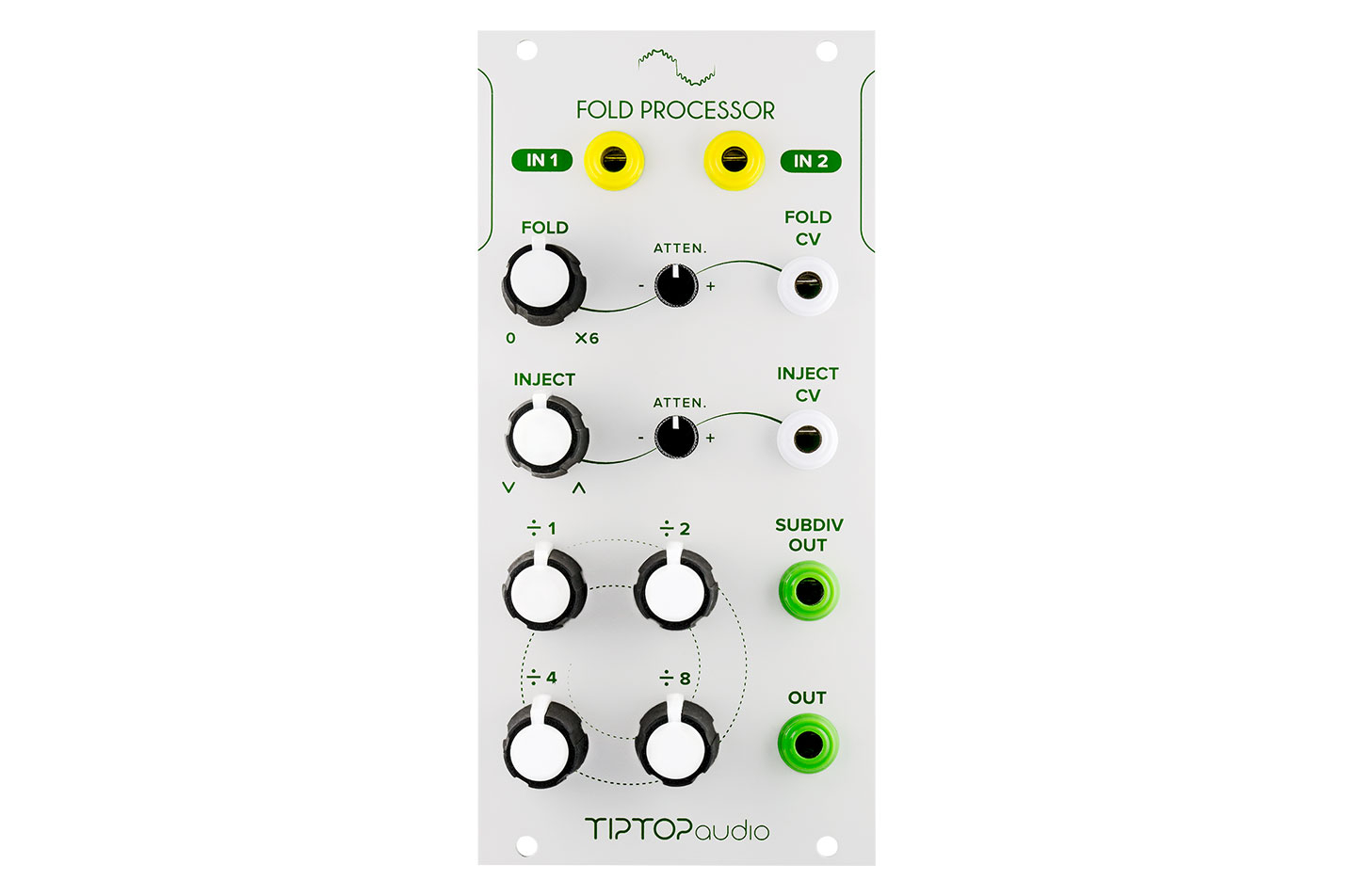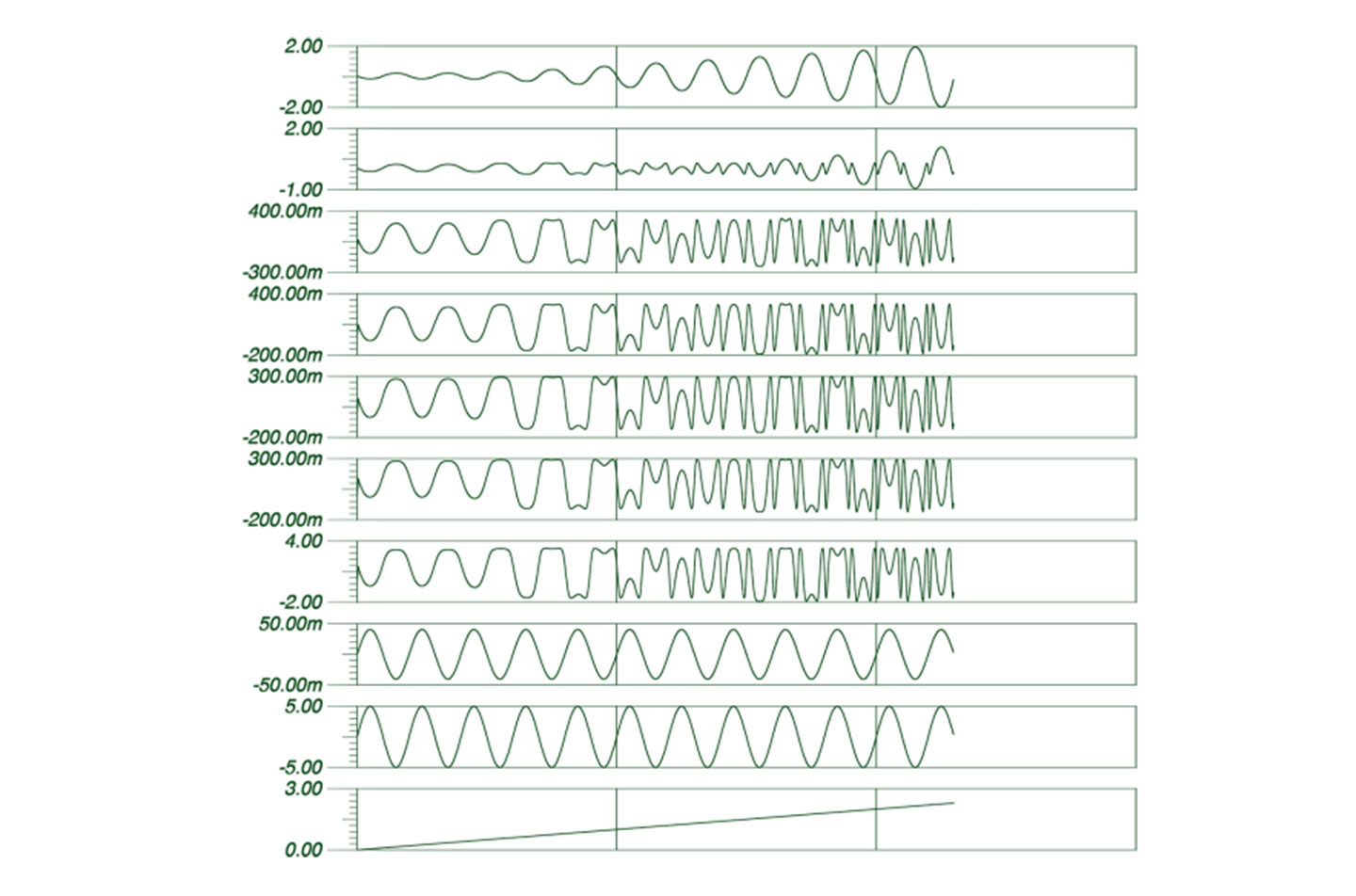- As the Eurorack scene acquired a new legion of fans over the past decade, the designs available have shifted to meet their needs. Where earlier Eurorack systems were comprised largely of simple oscillators, filters, envelopes and the like, modern setups often include capabilities more akin to a computer or a drum machine. Digital samplers brought the outside world into an environment previously made up entirely of electricity and currents. If you have the money, rack space and inclination, you can even replicate the entire Roland TR-909 in modular form, something unthinkable a few years ago. Oscillators have become increasingly feature-packed and complex. So if you want to give your system a broader sonic range, the world is your oyster.
As much as things have changed, the early days of modular synthesis remain a source of enduring ideas. Even with more primitive tools, the West Coast style of synthesis represented by Buchla and Serge systems are capable of creating complex sounds that are the envy of many a modern day synthesist. One tool in the armoury was the wave shaper, multiplier or folder, which offered a more diverse range of sound than your average combination of oscillators and filters could achieve at the time. In layman's terms, these modules manipulate the waveforms they process, turning, say, a simple sine wave into a serrated, harmonically rich signal, as demonstrated below.
This brings us to TipTop Audio's new wave multiplier, the Fold Processor. In interviews, TipTop reps have said it's based on '70s era diode circuits, which is perhaps a subtle reference to the Serge Wave Multipliers. It excels at taking simple sound sources and making them richer and more tonally excited. But it can also take drums or more complex sound sources and fundamentally change their character. While it is aggressive in nature and works better with some sounds than others, it contains sweet spots that can really give sounds a shot in the arm without sounding drastically manipulated. Or on the other hand, you can quickly render sounds unrecognisable.
The Fold Processor has two inputs and two CV-controllable parameters with bipolar attenuators labelled Fold and Inject. The Fold control is key to the module and influences the character of what the other parameters offer. At subtle settings, it introduces the vowel-like, woah-ing harmonics of additive synthesis. With controlled, low-range CV manipulation, you can pass through a set of harmonics that seem to mimic a form of wordless speech, almost like a talk box. This works especially well for adding interesting harmonics to bass sounds. If you go further with the Fold control, you quickly enter a world of abrasive, buzzing textures. Depending on the source material, these can be quite useful. A lot of the time, it crunches the signal into oblivion. These destructive settings do have their nuance and richness but it's worth pointing out that you're far more likely to encounter wild sounds than palatable ones. This is hardly unusual in the modular world but those looking for subtler treatments will quickly recognise and focus on the relevant settings.
The Inject control changes the bias, which amounts to creating different flavours of harmonics. It's no secret that certain Inject settings create dead spots but apparently this is just the nature of such a circuit. It does however require considered attenuation when manipulating its CV input. In certain cases, though, cycling over dead spots can be an interesting way of adding randomness to a patch. While you can add other timbres by simultaneously manipulating the Fold and Inject CV inputs, I tended to leave Inject at a specific setting depending on the type of sound I was processing. Generally speaking, I got the most out of the Fold Processor by cycling through Fold and Inject settings and sticking to a combination that served the musical purpose at the time. Having said that, extreme, sequenced CV manipulation of both parameters can lead to shattered, morphing sounds that I couldn't have come up with otherwise. And again, the nature of your source material greatly dictates the parameters you end up using.
The following four Subdivide controls could almost be thought of as sub octave generators creating lower order harmonics below the input signal. You can blend in the four octaves to taste. This can be especially interesting on simple signals and flatter sounds like pads. Holding down a chord, dialling in sub harmonics and then modulating the Fold control can make a basic pad into an evolving one while monophonic sequence lines can be beefed up with extra low end information.
A lot of modular users like to jam solo on the system before scouring the recording to cut out the best bits to use in a production. In this sort of workflow, the Fold Processor is excellent for making dramatic, almost tearing sounds. Often you'll get an impossibly morphing texture midway through a sweep of a knob or during a random combination of CV signals. There might only be eviscerating noise on either side but I found picking through audio that'd passed through the Fold Processor offered a reasonably high strike rate of good sounds. This was especially the case for the type of show-stopping effects that help you pass from one part of a track to the next.
Complex oscillators and advanced samplers are among the more expensive options in the Eurorack world. The Fold Processor, on the other hand, is a pretty reasonable 140 Euro. While these are obviously wildly different products that do different things, the connection is that they offer sounds beyond the standard language of simple oscillators and filters. In smaller systems, the Fold Processor makes a new palette available to you, especially when compared to something like a ring modulator or a spatial processor. It can be wild and hair raising but its sonically rich, easy to use and opens up a complex web of sound.
Ratings:
Cost: 4.2
Versatility: 4.0
Ease of use: 4.0
Sound: 4.0
 A lot of modular users like to jam solo on the system before scouring the recording to cut out the best bits to use in a production. In this sort of workflow, the Fold Processor is excellent for making dramatic, almost tearing sounds. Often you'll get an impossibly morphing texture midway through a sweep of a knob or during a random combination of CV signals. There might only be eviscerating noise on either side but I found picking through audio that'd passed through the Fold Processor offered a reasonably high strike rate of good sounds. This was especially the case for the type of show-stopping effects that help you pass from one part of a track to the next. Complex oscillators and advanced samplers are among the more expensive options in the Eurorack world. The Fold Processor, on the other hand, is a pretty reasonable 140 Euro. While these are obviously wildly different products that do different things, the connection is that they offer sounds beyond the standard language of simple oscillators and filters. In smaller systems, the Fold Processor makes a new palette available to you, especially when compared to something like a ring modulator or a spatial processor. It can be wild and hair raising but its sonically rich, easy to use and opens up a complex web of sound. Ratings: Cost: 4.2 Versatility: 4.0 Ease of use: 4.0 Sound: 4.0
A lot of modular users like to jam solo on the system before scouring the recording to cut out the best bits to use in a production. In this sort of workflow, the Fold Processor is excellent for making dramatic, almost tearing sounds. Often you'll get an impossibly morphing texture midway through a sweep of a knob or during a random combination of CV signals. There might only be eviscerating noise on either side but I found picking through audio that'd passed through the Fold Processor offered a reasonably high strike rate of good sounds. This was especially the case for the type of show-stopping effects that help you pass from one part of a track to the next. Complex oscillators and advanced samplers are among the more expensive options in the Eurorack world. The Fold Processor, on the other hand, is a pretty reasonable 140 Euro. While these are obviously wildly different products that do different things, the connection is that they offer sounds beyond the standard language of simple oscillators and filters. In smaller systems, the Fold Processor makes a new palette available to you, especially when compared to something like a ring modulator or a spatial processor. It can be wild and hair raising but its sonically rich, easy to use and opens up a complex web of sound. Ratings: Cost: 4.2 Versatility: 4.0 Ease of use: 4.0 Sound: 4.0